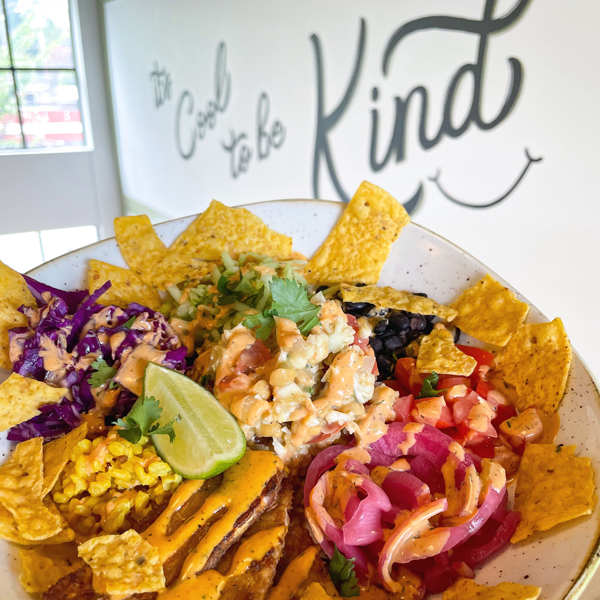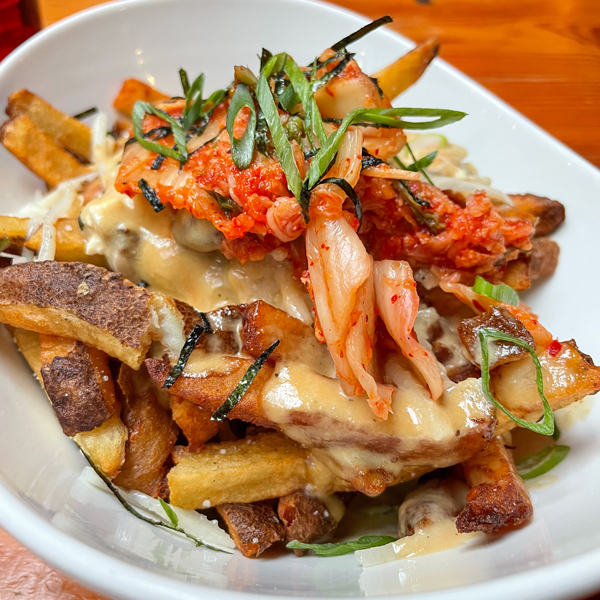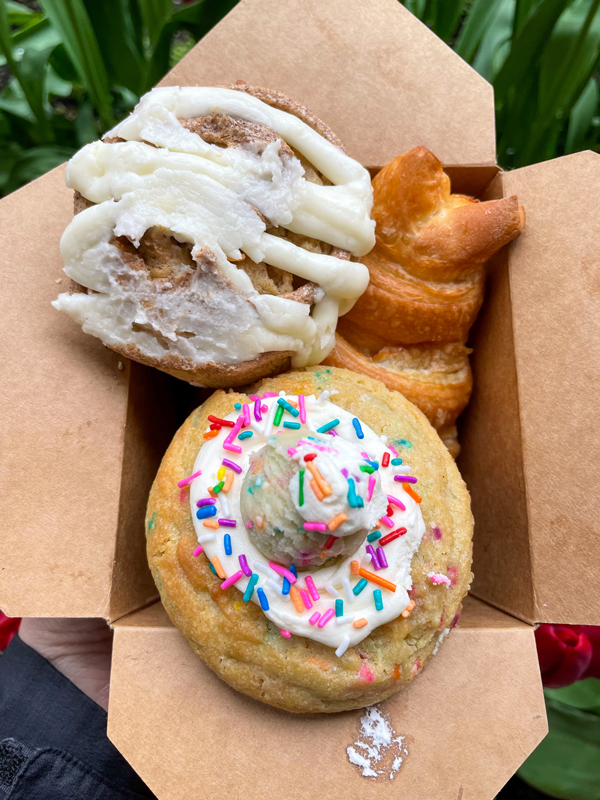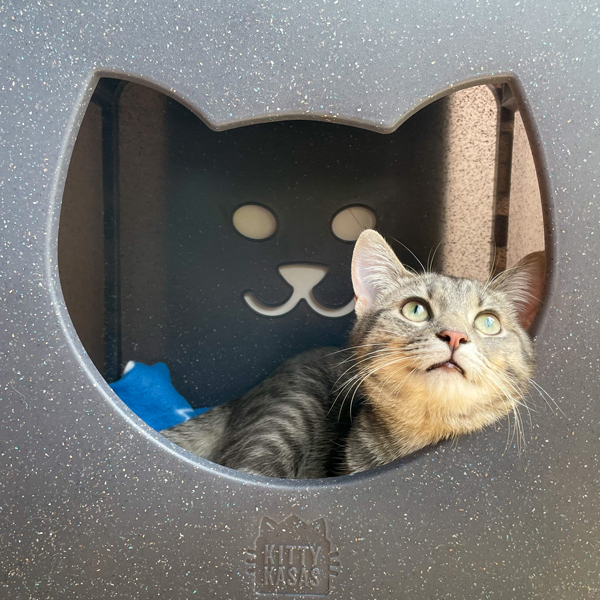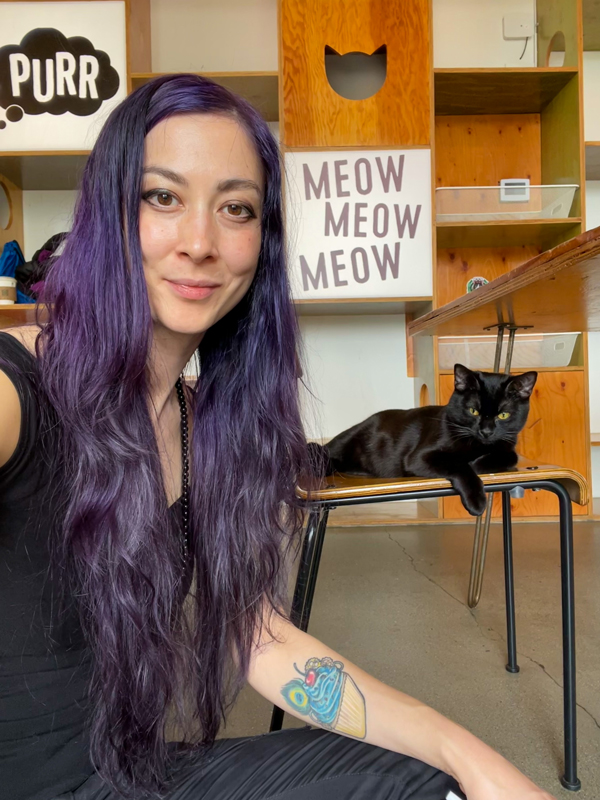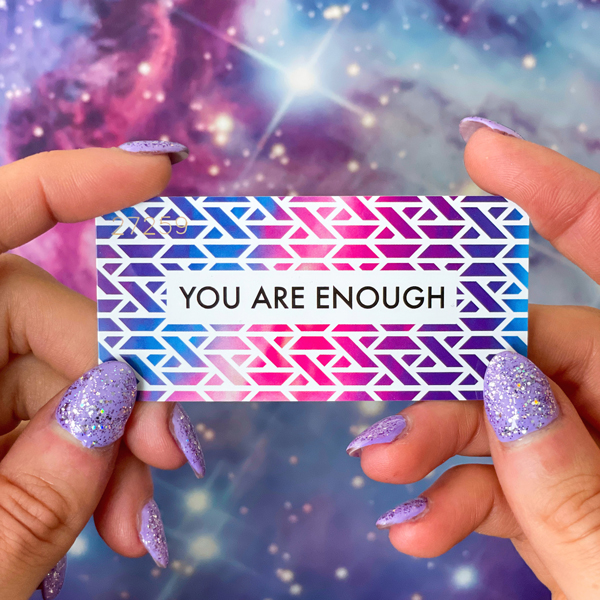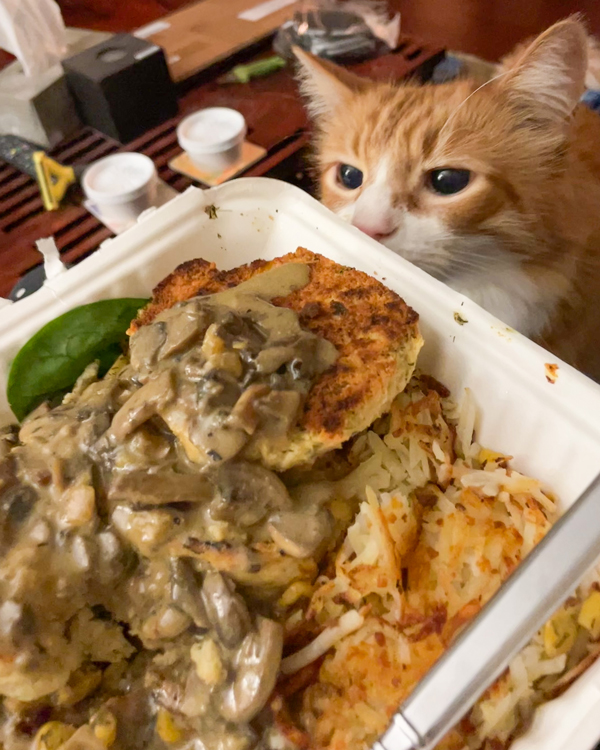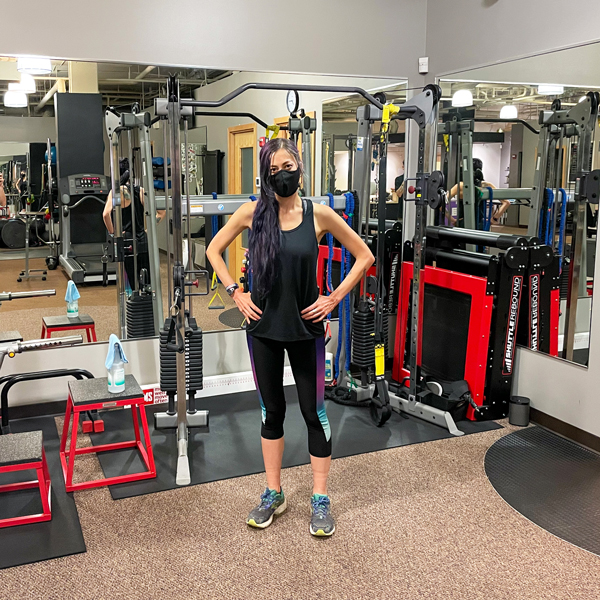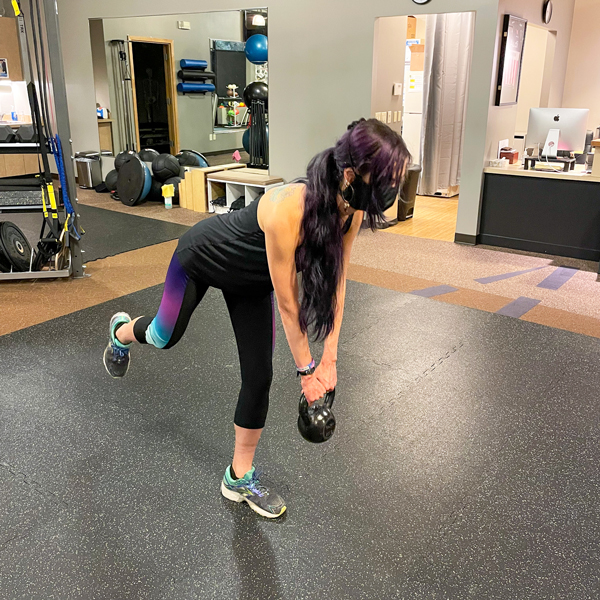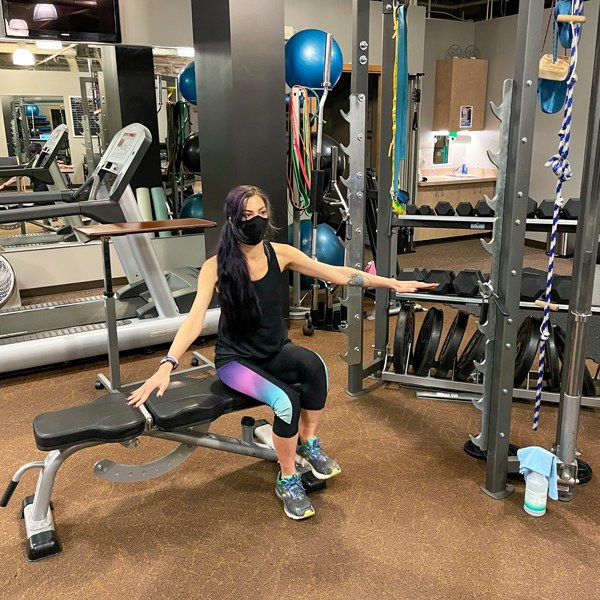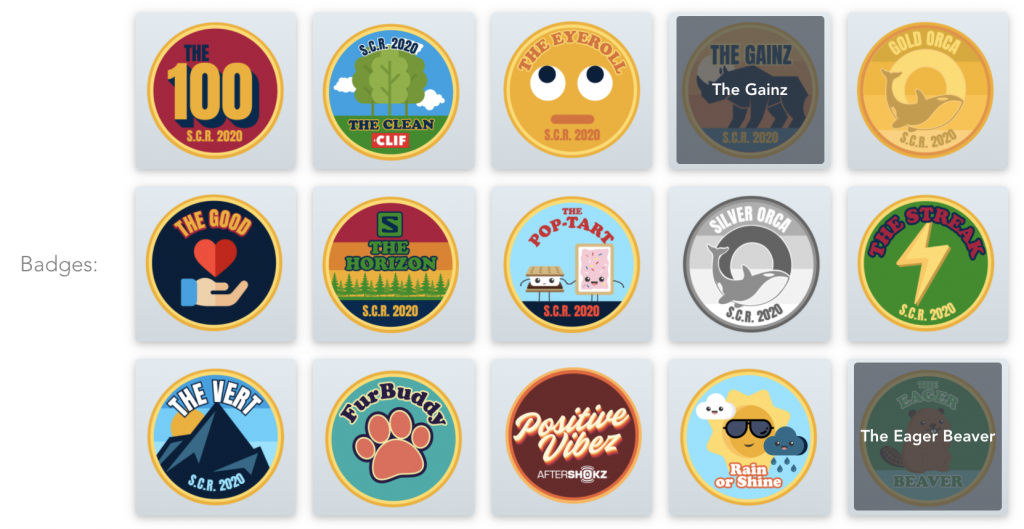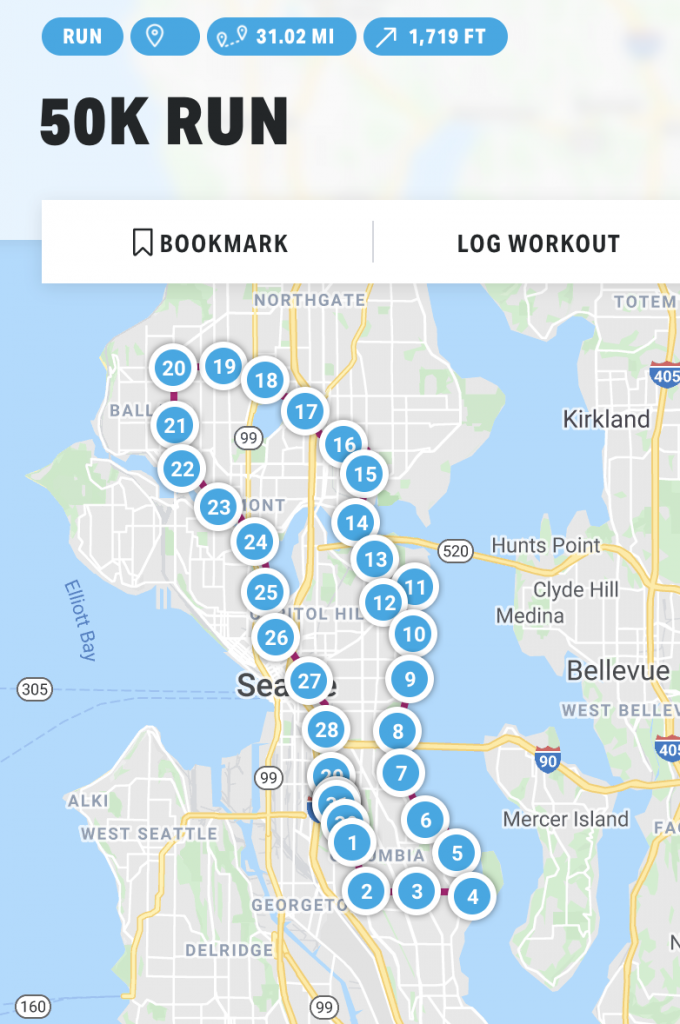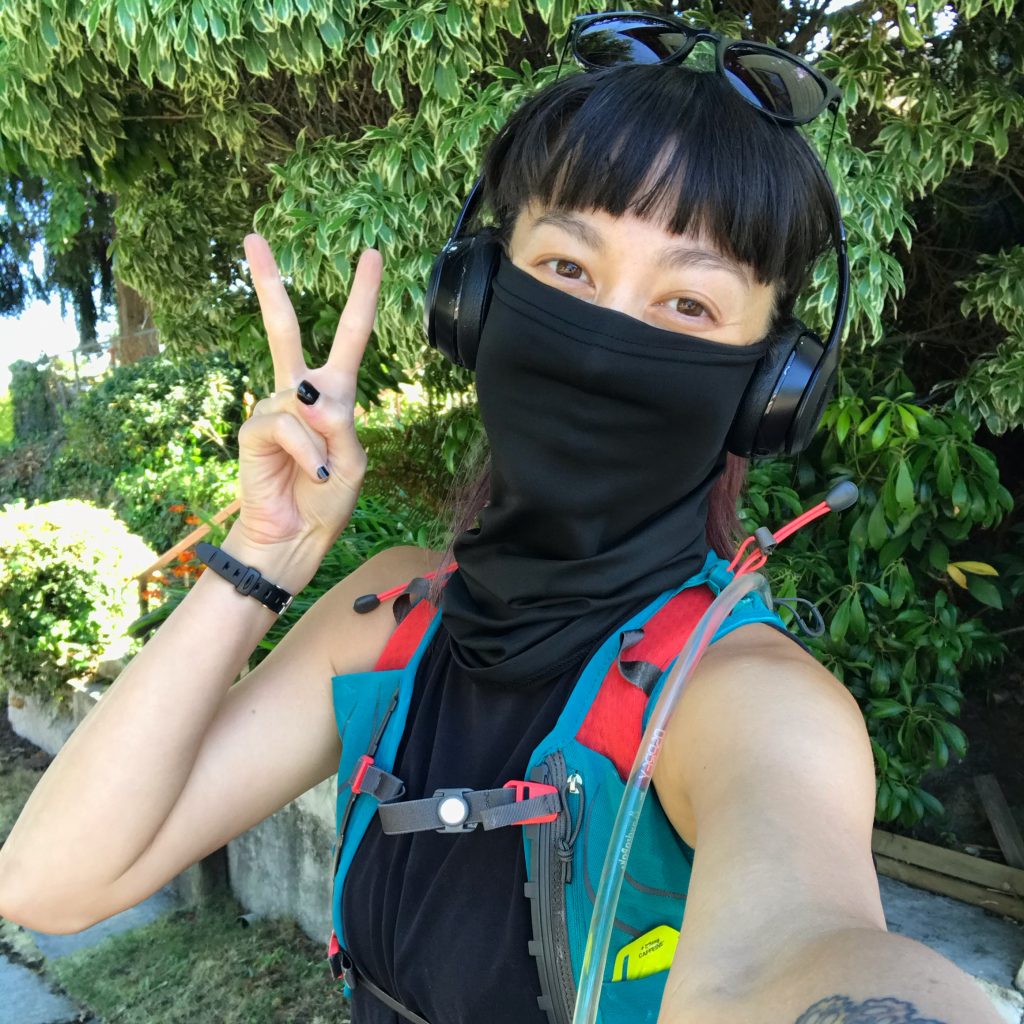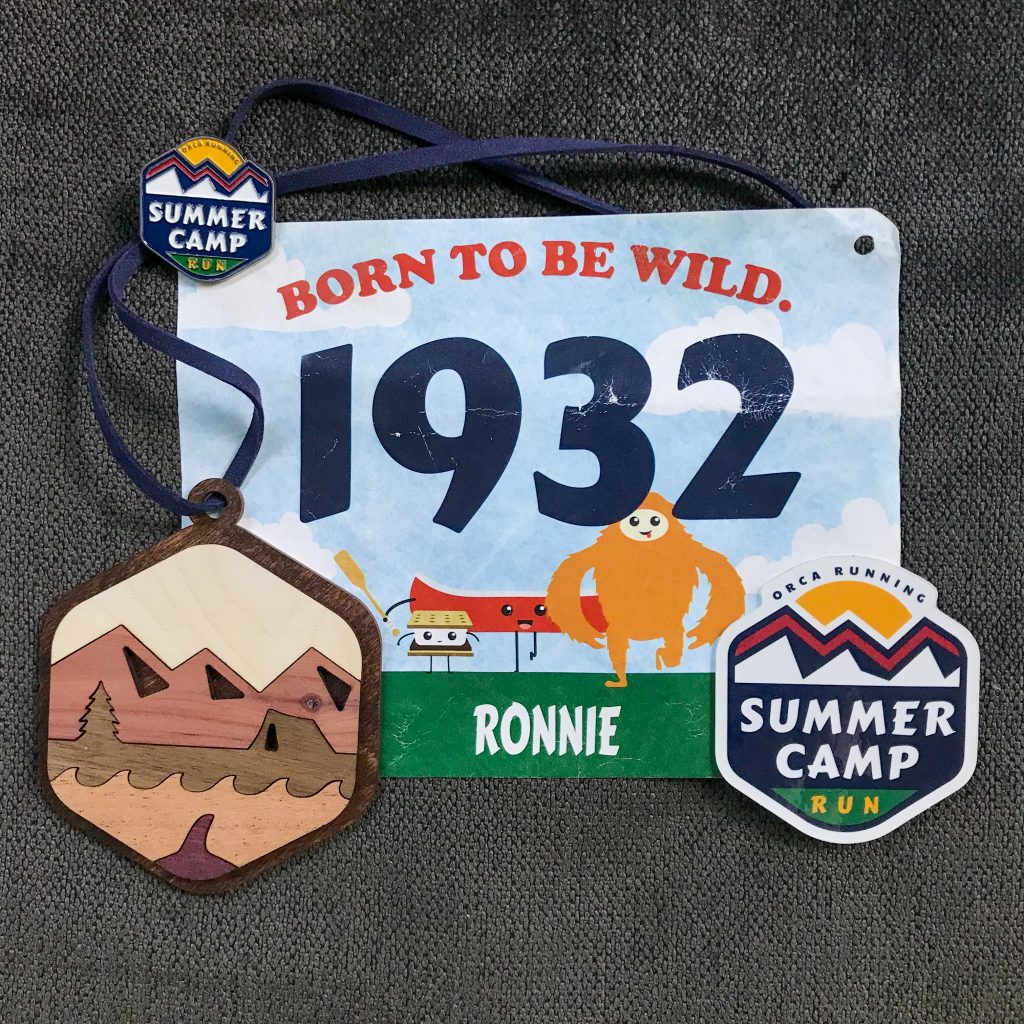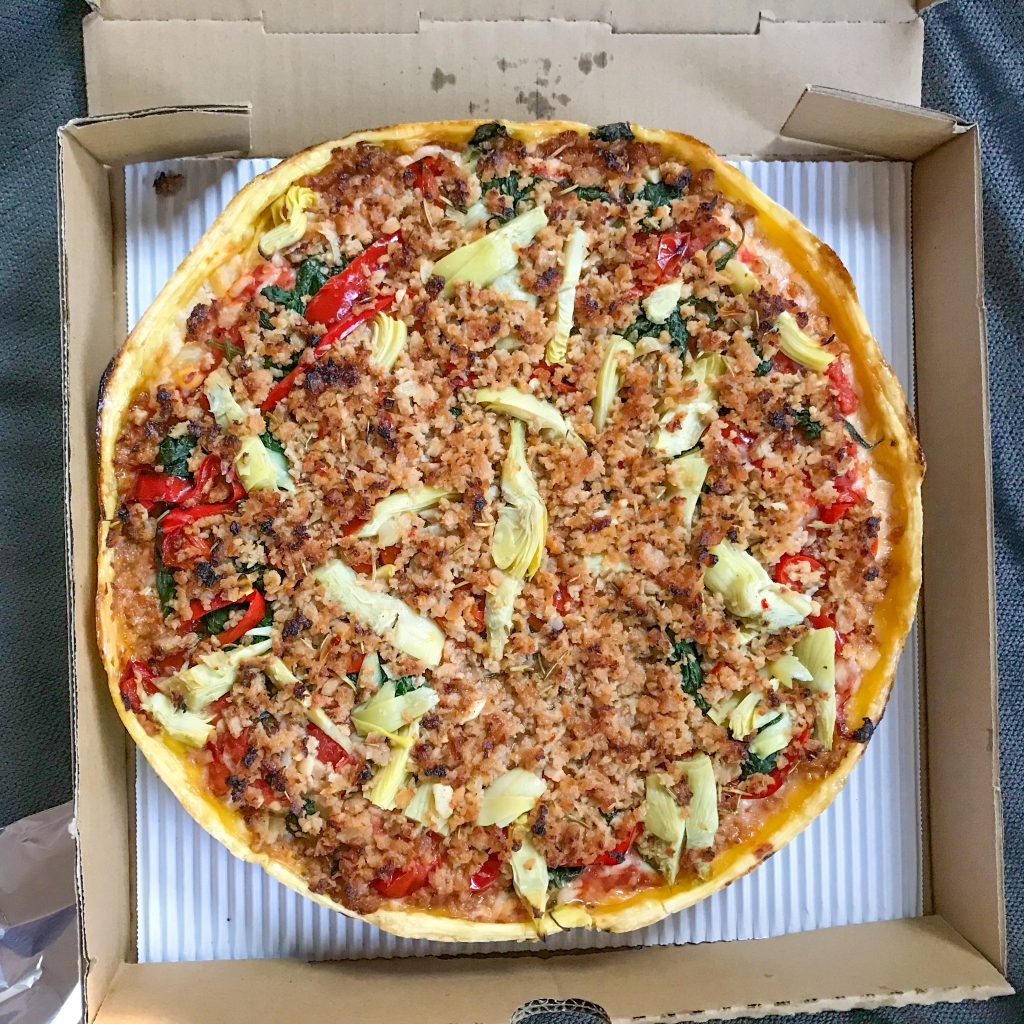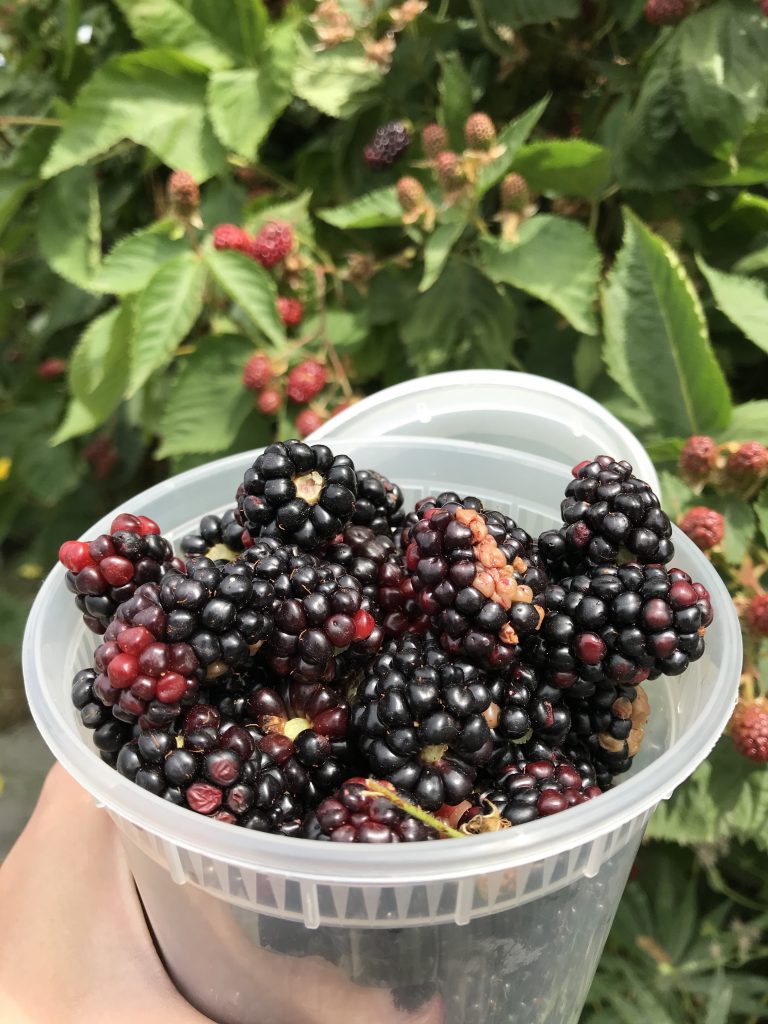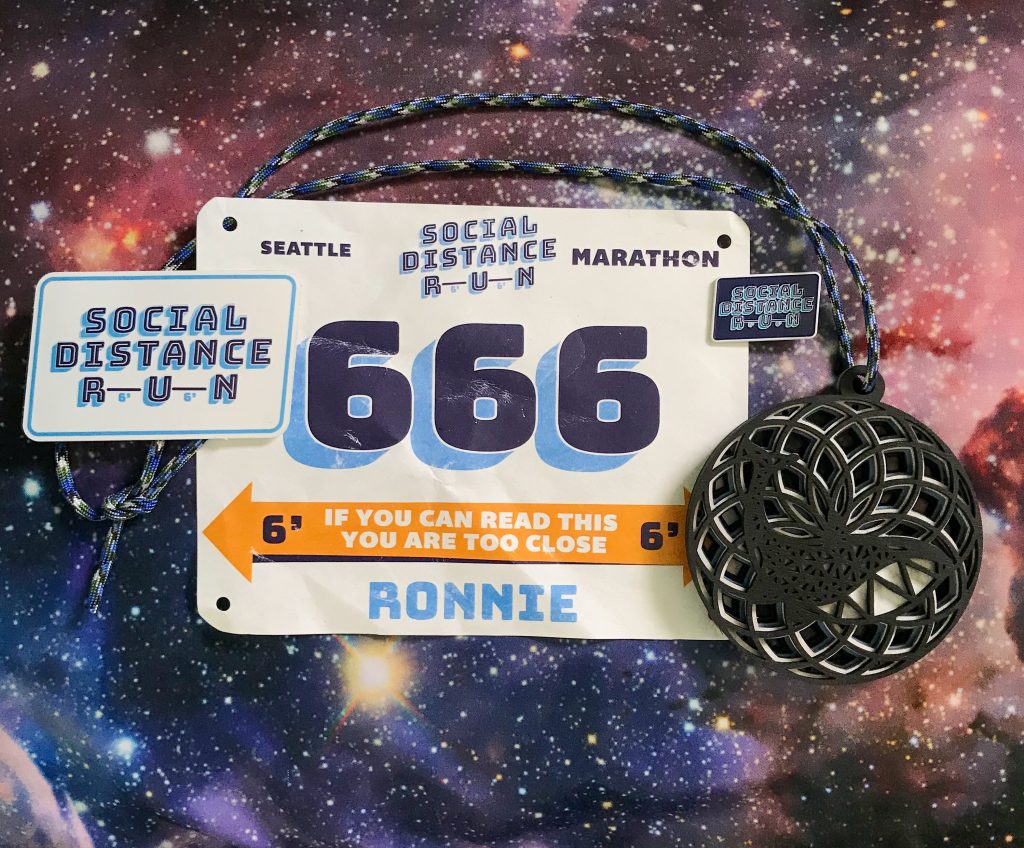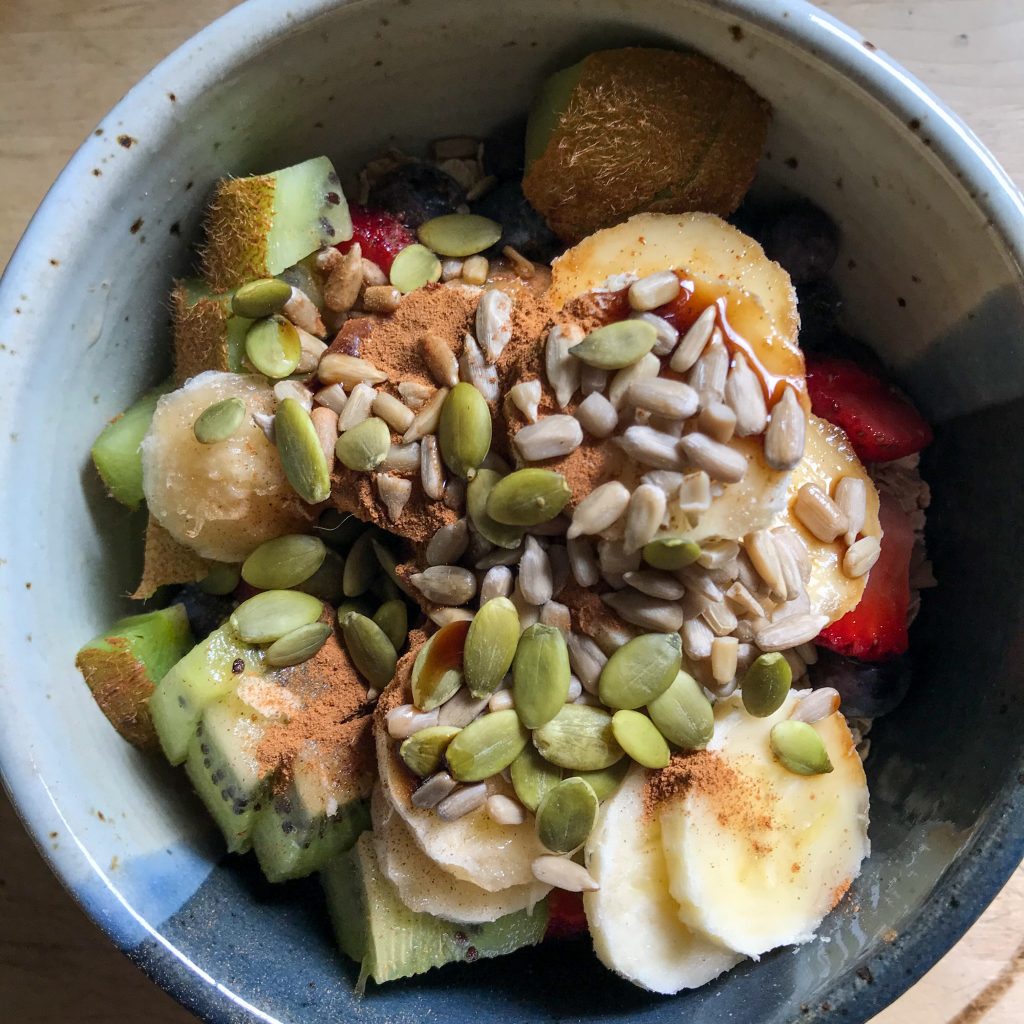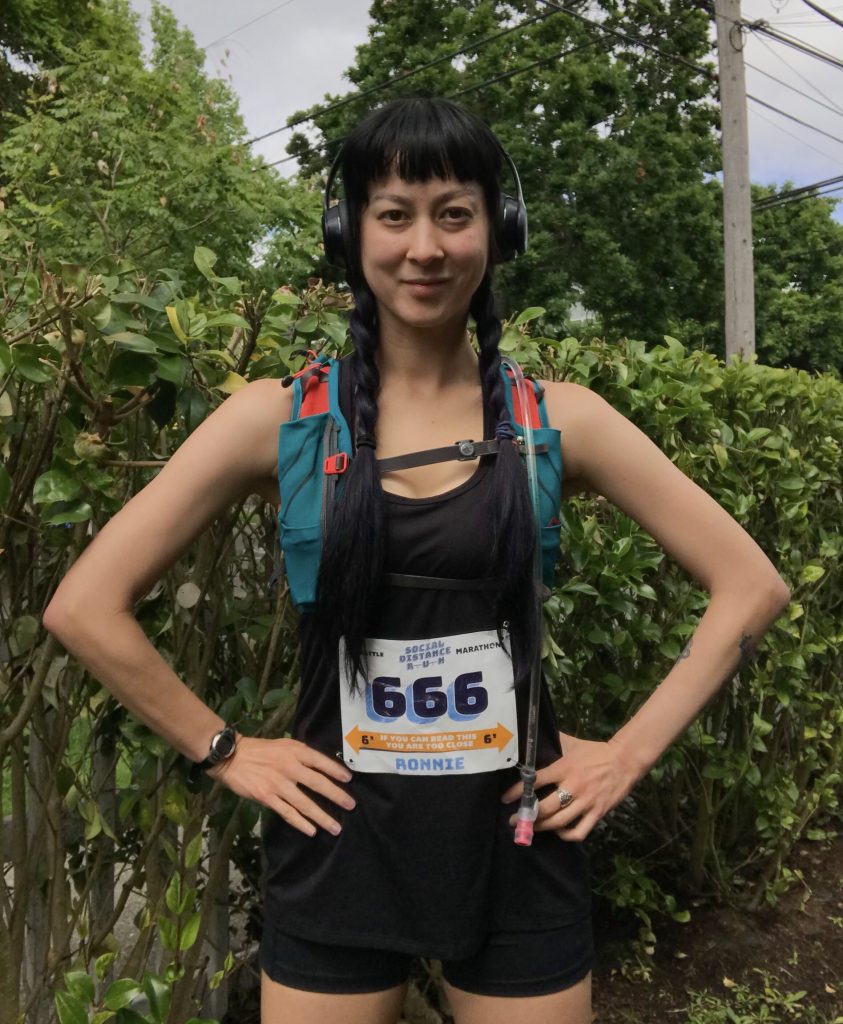The 2023 Burning Man 50k Ultramarathon

Years ago in my twenties, I had heard of a Burning Man 50k ultramarathon. I thought that whoever runs that distance in the desert has got to be insane, where the alkaline environment is so harsh that absolutely nothing grows. It’s where temperatures can exceed 100 degrees while dust storms obscure everything around you. It’s like running an ultra on another planet.
Pink Lightning is an action-packed camp that graciously hosted this beloved 50k. The camp also offered events such as a 5k race, yoga, an art safari night ride, and something called “The Odyssey”—a strange event on the playa where participants compete to finish 6, 12, 18, or 24 miles, beers, doughnuts, or orgasms in any combination within 24 hours. Things you need a lot of stamina for.
Earlier this year, I wasn’t sure if I could secure a ticket to Burning Man. It can be notoriously hard to get one because of how popular it is. Even though the odds looked a little slim—yet hopeful—I still trained for this race anyway. Can you imagine sacrificing your social life and other things you enjoy, just to train for an epic race that you don’t even know if you’ll get to be able to run in?
But still I dutifully finished most of the workouts, and always completed the Saturday long runs, the most important part. I trained among the lush forests in the mild climate in hilly, sea-level Seattle—a sharp contrast to the extremely dry, hot, and dusty alkaline lake bed at a nearly 4,000-foot elevation in Nevada.
As the event grew closer, so did my odds of getting a Burning Man ticket. Once my dear friend Shawn found one for me (thank you so much, Shawn!), I could now register for the race. It was official—I was going to run 50k in the desert! My training wasn’t going to waste after all.
Never had I ever imagined that I would toe the line with hundreds of other ultramarathoners in this very same race.
The Burning Man 50k Ultramarathon Course
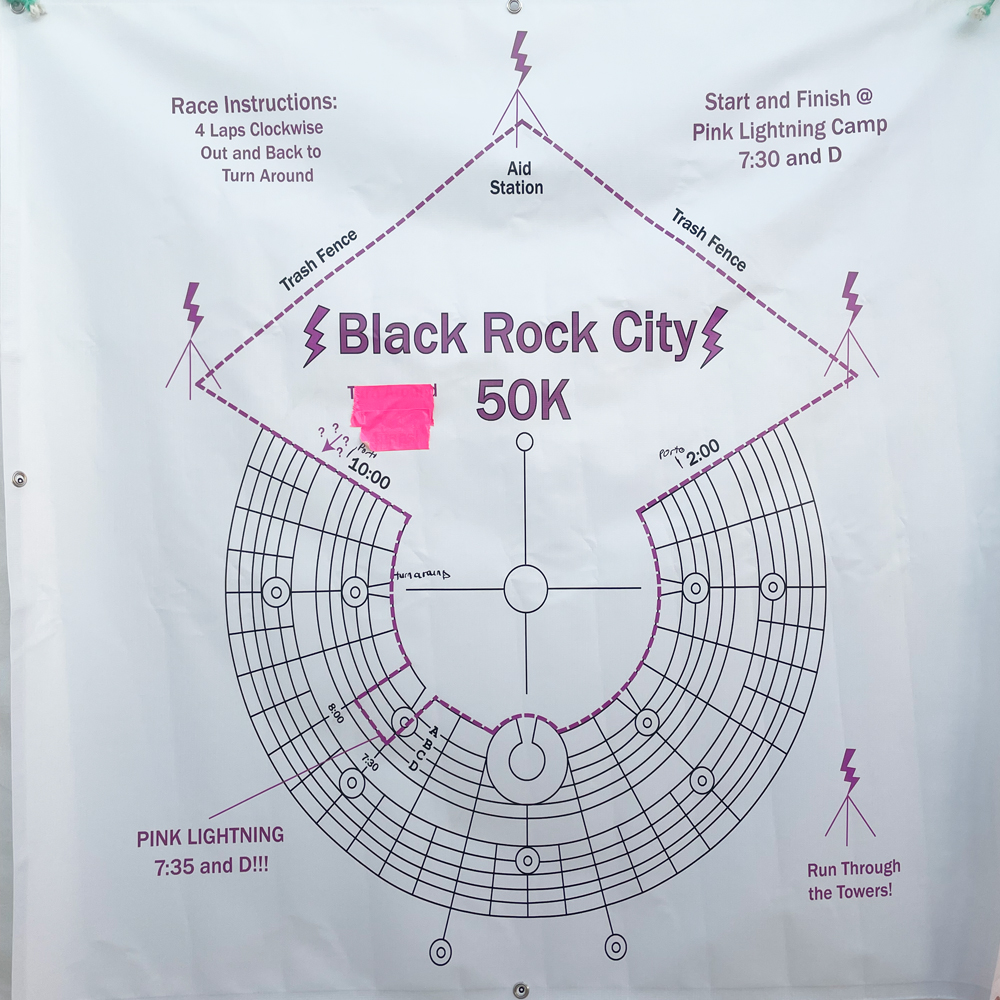
Burning Man sits in an area of seven square miles. It’s so vast that an entire race course can be created. It is as follows:
- Starting at Pink Lightning Camp at 7:35 & D, we would run until the 8:00 street and turn right.
- We ran until reaching the Esplanade and turned left to run along that.
- When we reached the 10:00 side of the city, we kept running until getting to the trash fence, the very edge of Burning Man.
- We ran along the trash fence reaching each pink lightning bolt checkpoint.
- We kept going until a third pink lightning bolt pointed us back to the 2:00 side.
- We went along the 2:00 side, until hitting the esplanade once again.
- We ran along the curve of the esplanade until the 7:30 street.
- We turned left onto 7:30 until reaching D street, and kept running until the lap checkpoint at the 7:45 point, where Pink Lightning was.
That was one 7.5 mile lap. We would repeat the same route three more times.
The last part was an out-and-back at 9:10 & Esplanade to complete the 31 miles. That was about a mile or so.
The beginning of the long, epic ultramarathon
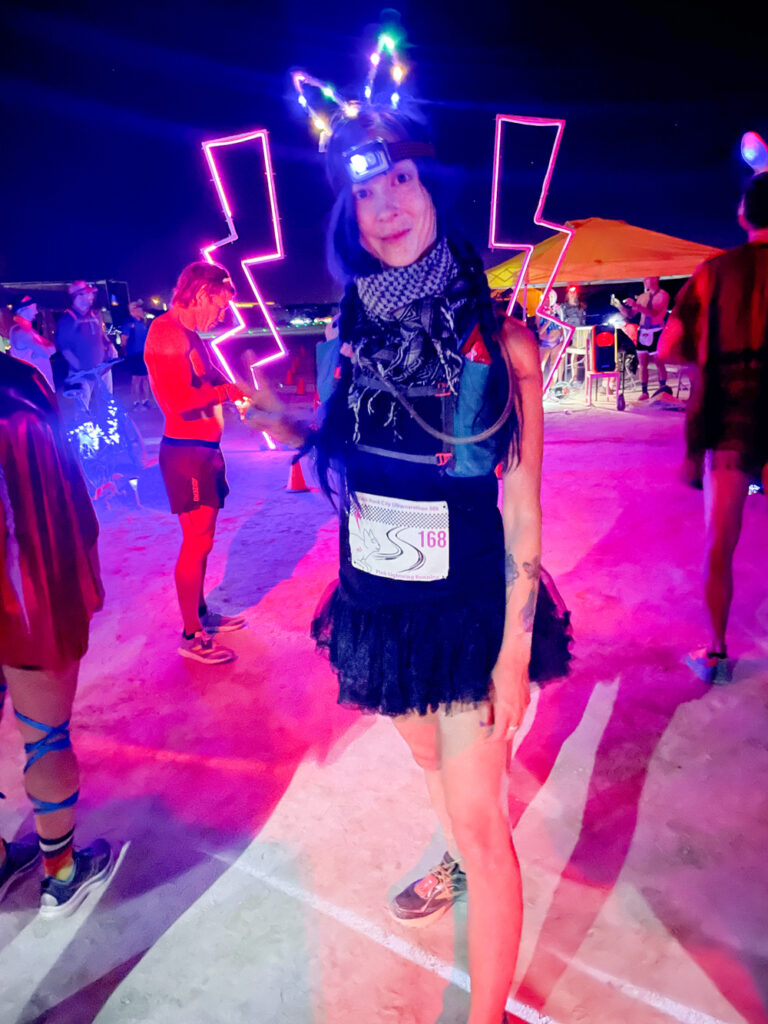
You have to be a little crazy to voluntarily wake up around 3:30 a.m. to run 31 miles in the desert just for fun.
Waking up, I couldn’t believe I was about to do the Burning Man 50k ultra. I ate a bowl of oatmeal with vegan protein powder. After filling up my hydration pack, I headed to Pink Lightning.
Cheers and excitement filled the air. Standing at the starting line, I was one of the 350 runners. I didn’t know this race was so popular. At least we could all revel in doing something amazing. We get to test our limits and be in this together.
The race started at 5:00 a.m., so that we could enjoy the darkness and cooler temperatures before the sun cooked us. We wore lights so that art cars and bicyclists could see us.
The starting signal went off. And like a stampede, hundreds of us were let out from the starting line, the first steps to this epic journey of the Burning Man 50k.
All fun and games during the first lap
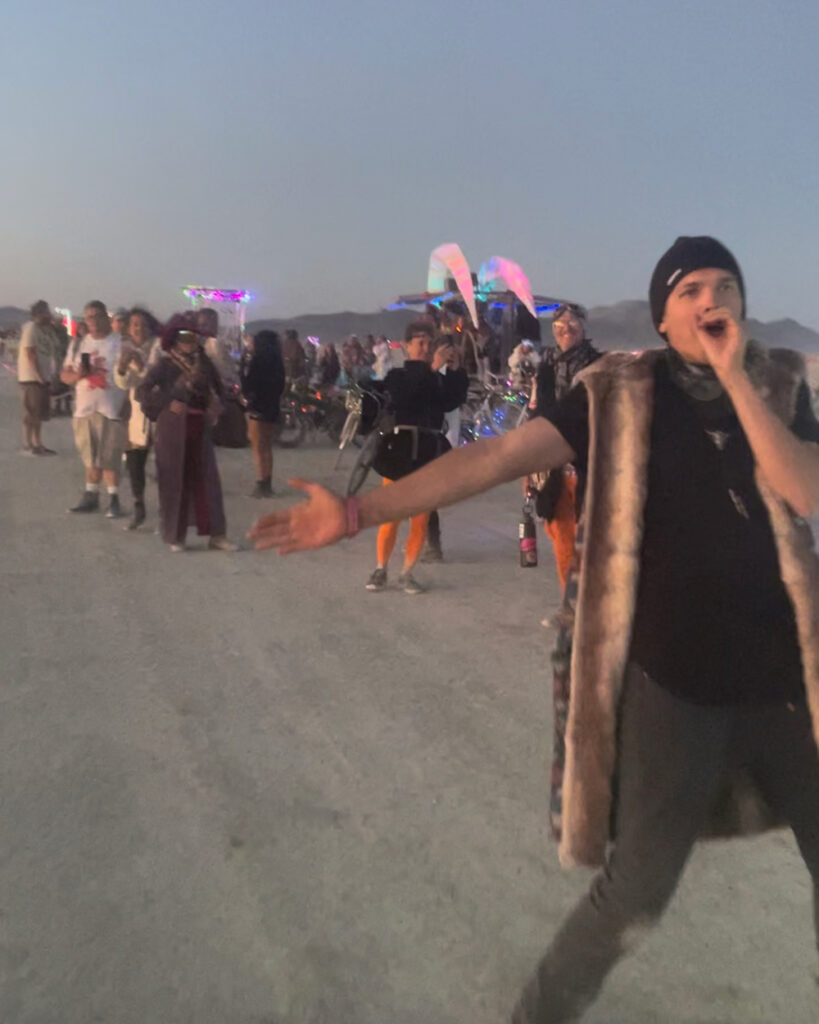
So far, running on the flat desert lake bed felt much easier than the hills of Seattle. Even before the sun came up, many folks stopped to cheer us on along the trash fence in the deep playa. It was a good start.
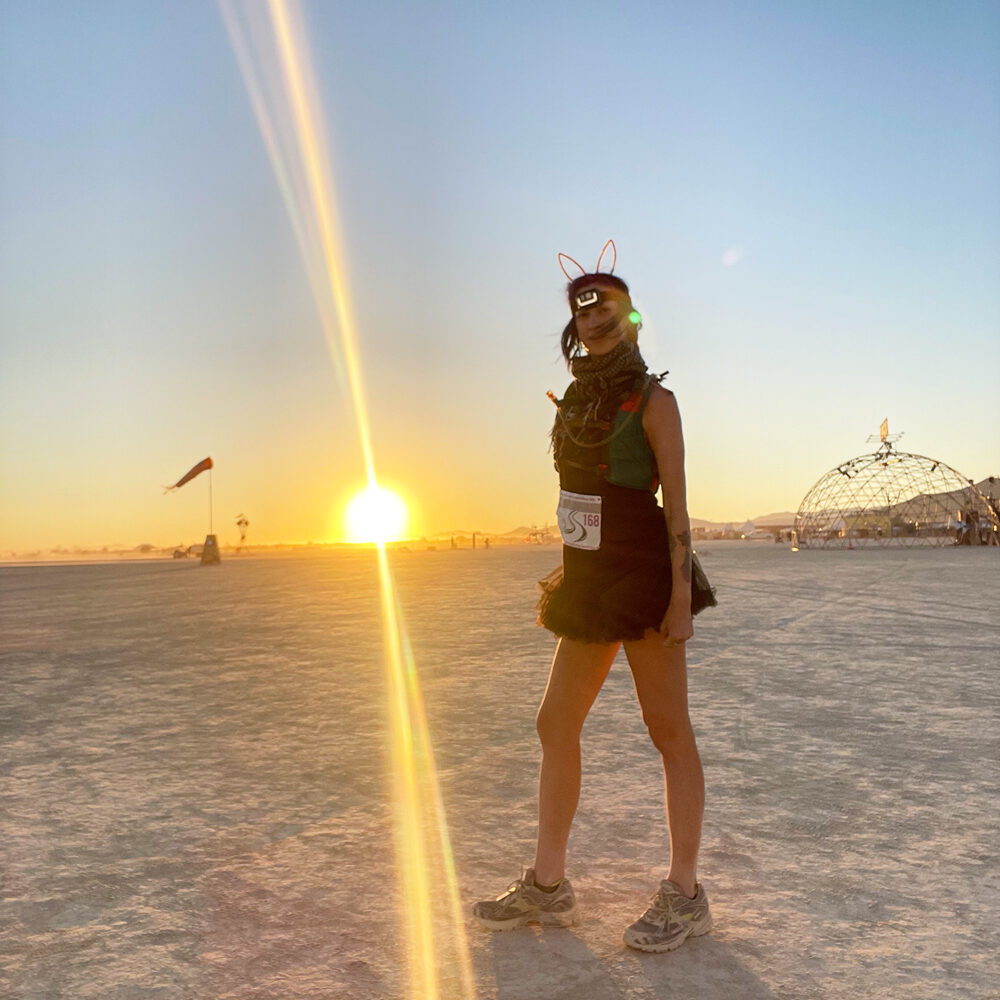
As I reached the Esplanade, the sun broke the horizon in the East and slowly climbed higher into the sky. I remembered how running with the sunrise was once a favorite pastime, as the city woke up and early birds brewed their coffee. Here, the night owls who partied all night on the playa were now making their way back to their camps, confused as to why so many people were running this early.
A little after an hour, I hit the first lap checkpoint at the camp and loaded up on snacks, water, and electrolytes. It’s so important to replenish, especially on electrolytes, because water easily evaporates from your body in this extreme environment, even if you’re not running. The electrolytes help keep water in. The snacks obviously help fuel us, because we burn calories so fast out there.
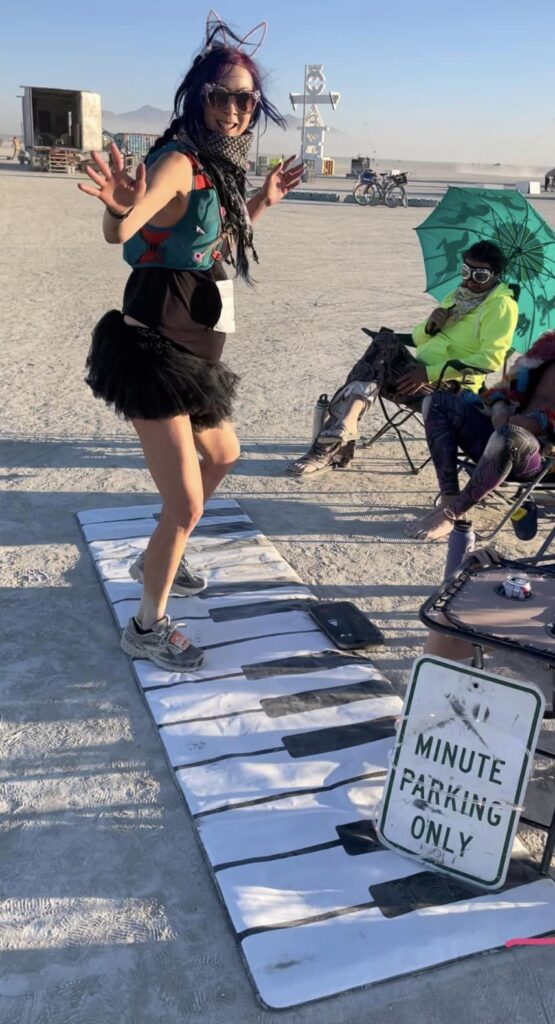
The Playa provides
Usually we Burners operate on the principle of Radical Self-Reliance. And most of us do take care of ourselves, bringing everything we need, plus more to share. That’s because another principle is Gifting.
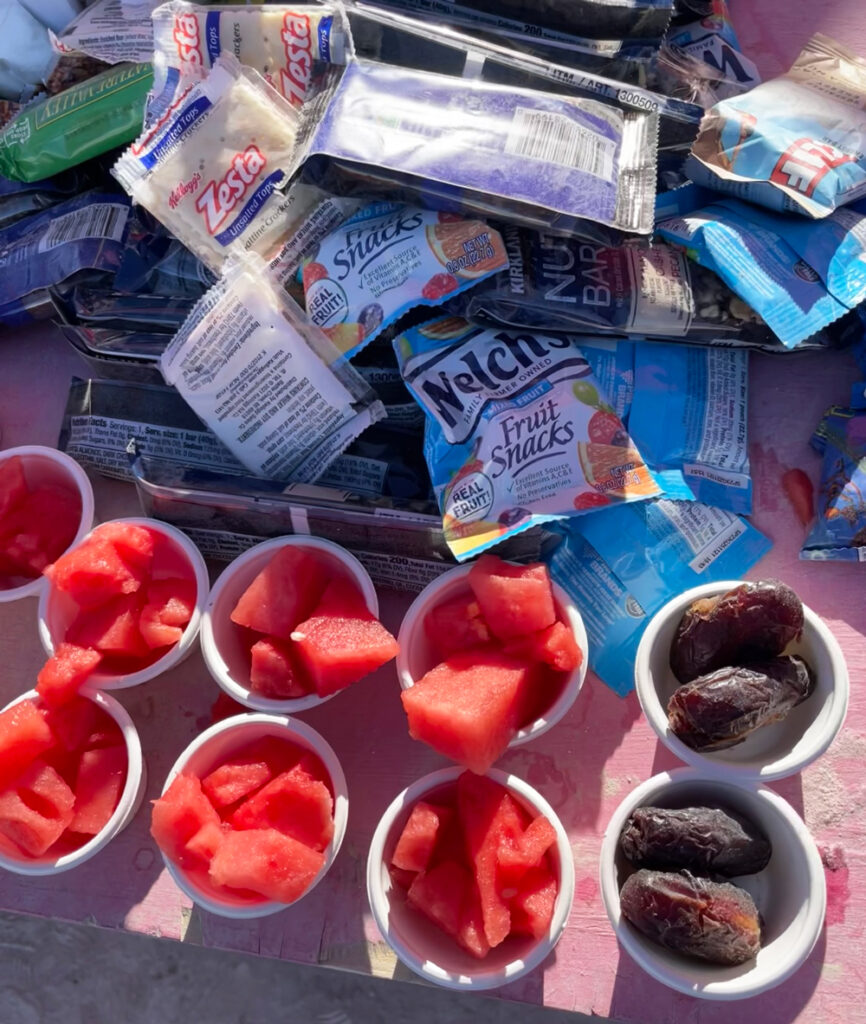
Throughout the race course, there was no shortage of “Playa Angels,” people who set up tables offering food, drinks, water, and plenty of cheers to go around. Some even ventured all the way out to the deep playa and made sure we were taken care of! I was blown away by their generosity. They gave me so much water during the race, that I didn’t even finish what was in my hydration pack. There were plenty of vegan snacks–energy gels, fresh fruit, granola bars galore–so I had enough calories to keep going.
Aside from the previous snacks, there were no shortage of cheers, creativity, and encouragement as we made our way along the journey.
I was just ending the second lap and crossed the timing mat into my third. Now I was halfway through the race at mile 15.
Navigating through white-out dust storms
For the second half of the race, the wind and dust picked up. A dust storm was incoming in the distance. This is why we wore scarves, so that we can mask up.

Soon we were racing inside the dust storm, where the visibility reduced to 15 feet! I could still see my hand in front of me, but the dust obscured all of the signs. Many of us runners couldn’t see where to go. A storm like this can be quite disorienting. Some of us, myself included, got lost on the course.
“It’s this way!” someone shouted.
It cleared just enough for a minute. I had veered at least a couple hundred feet off the course. I was so glad that someone said something, because I would have kept going!
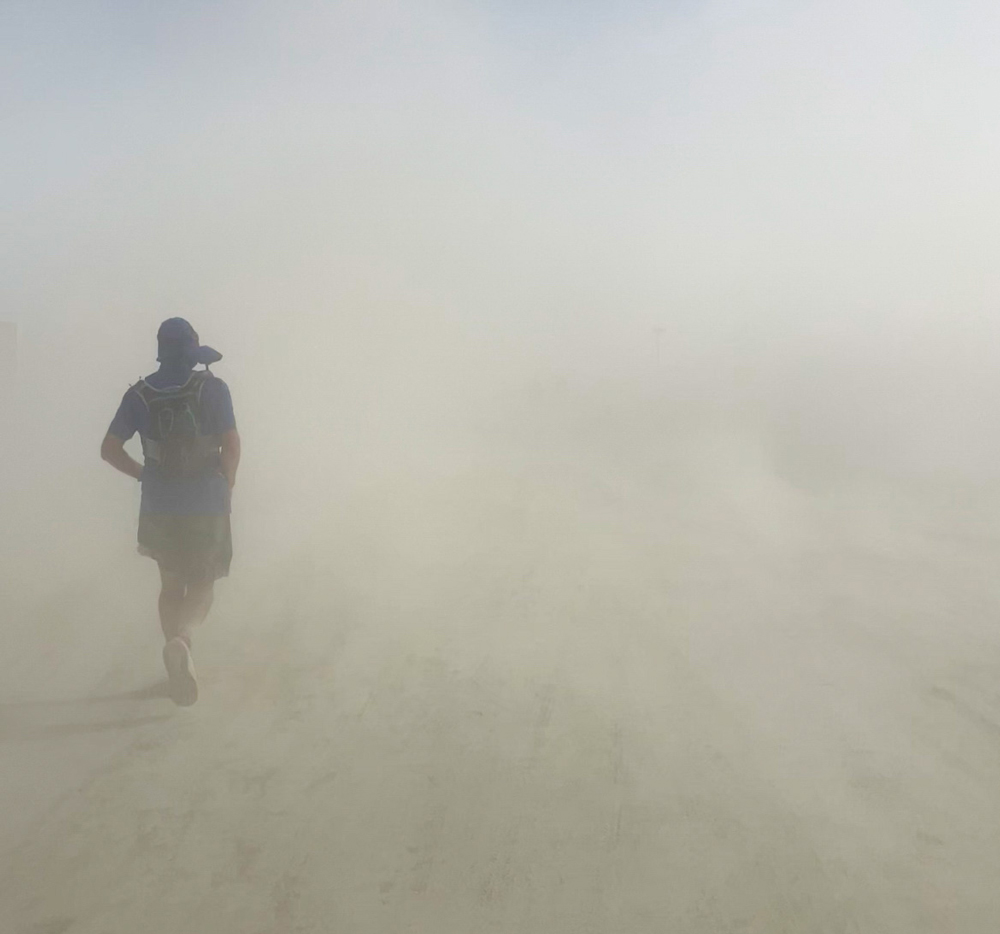
After struggling to find the path, I just followed another runner who seemed to know where he was going. But the dust storm was a white-out, even blocking the midday sun. We blindly followed what we hoped was the right direction.
I was relieved when I saw the pink lightning bolt at the trash fence.
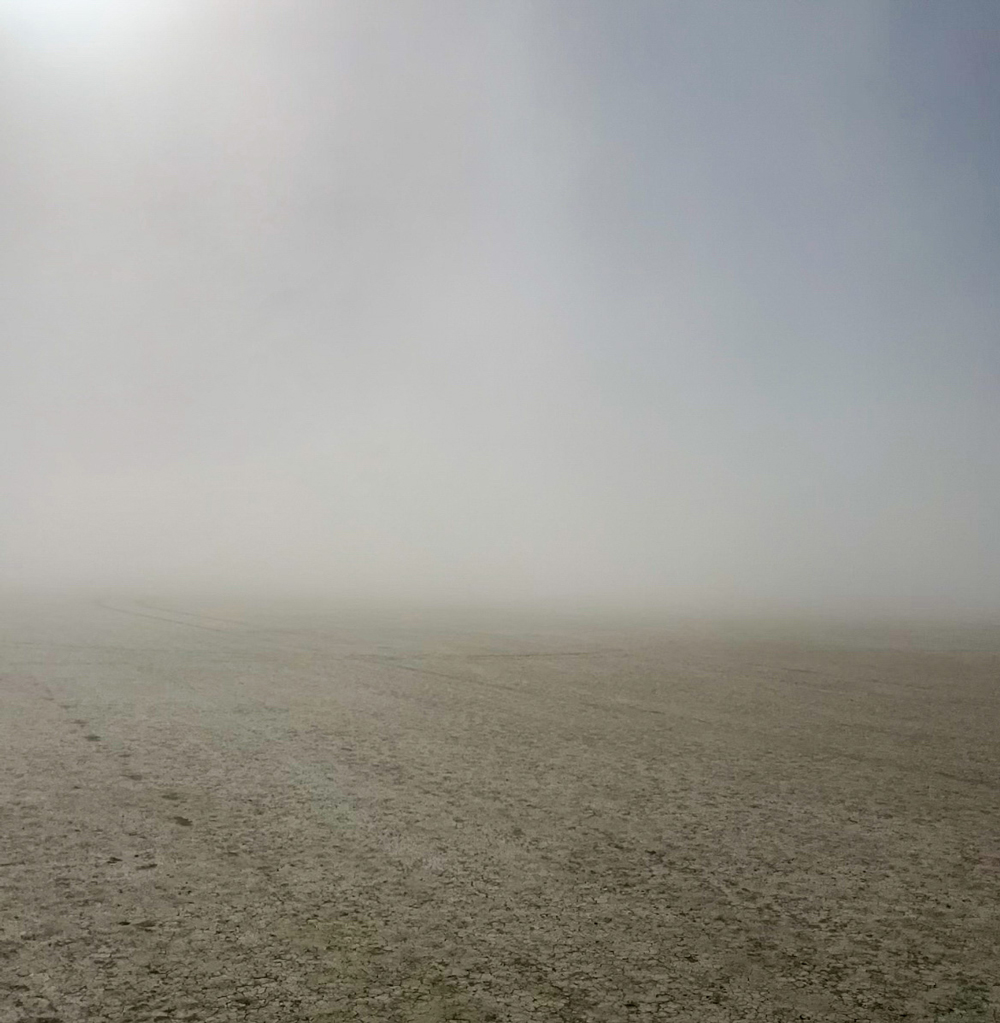
Aside from two other runners near me, the deep playa appeared desolate in the storm. There seemed to be no signs of life. My energy was waning. All I could do was keep going without thinking much, one foot in front of the other, as my sock slowly slid off in my right shoe.
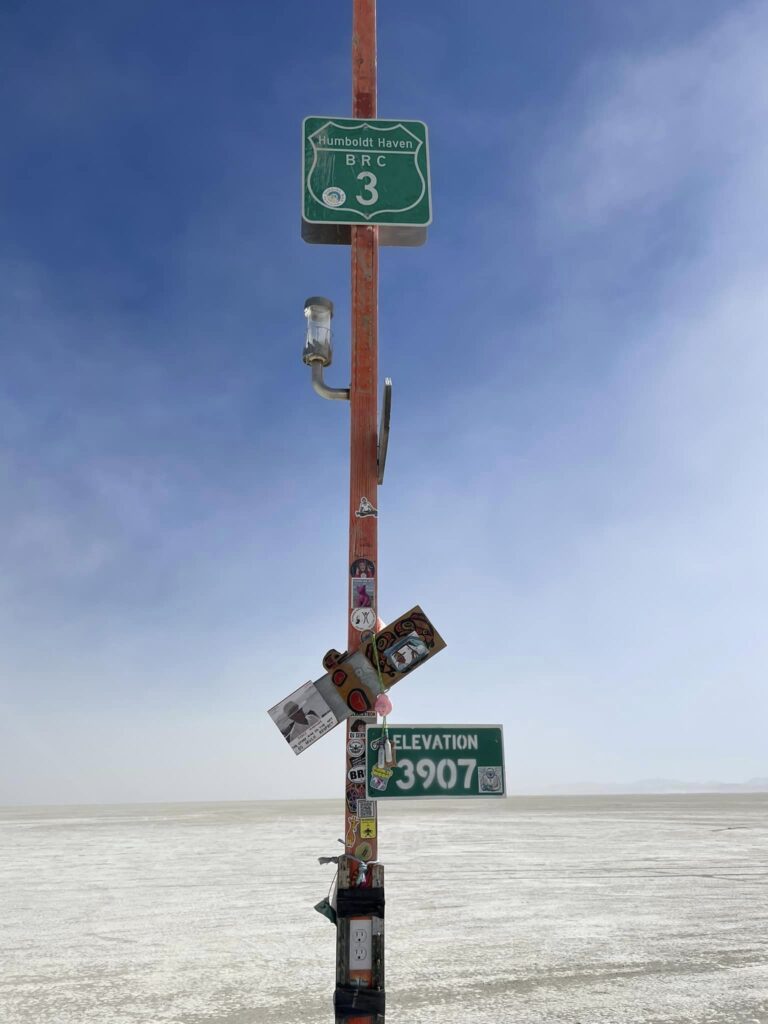
When the going gets tough, the playa angels get going

In the emptiest part of the playa, a crew of what looked like roadside workers with fluorescent yellow vests appeared in the dust. They cheered and hollered, holding car buffers and massage guns. It was literally a pit stop to massage tired runners. They pulled me aside and asked what I would like.
“Legs and back, please!” I said.

The crew went to work massaging my tired, stiff legs and my back, which has been supporting me this entire time. This was probably the best and most hilarious gift ever for a runner! I loved the idea and it was very useful to anyone who needs a pit stop like that.
After they sent me on my way, there was no choice but to power through the dust storms. The strong headwinds along the trash fence worked against me as I pushed through. The good thing was that it wasn’t blazing hot like I had expected. In fact, the temperatures were perfect: it didn’t go above 83 degrees, which is almost unheard of during the last week of August. At least the dust cools the air and offers some protection from the sun.
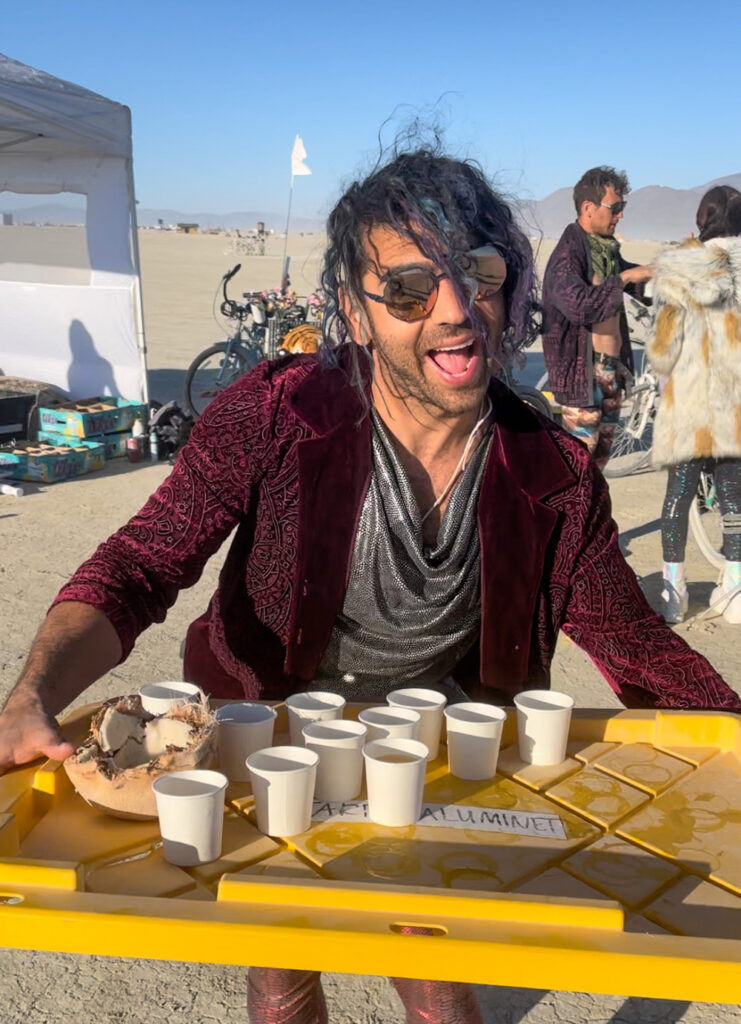
Another group of wonderful playa angels had an endless amount of coconut water, a wonderful treat during the hardest parts of the race. They were so amazing; they kept handing me more and more of those sweet natural electrolytes. I had as much as I could before setting off again.
Pushing forward along the Esplanade, I remembered that there was one more lap after this one. I sighed and kept going, knowing that I would eventually be done.
I made it through the camp checkpoint, finishing the third lap. Some runners had already finished the race.
The descent into the darkness
The fourth and final lap felt like the loneliest part of the ultramarathon. Whatever energy I had left was draining fast.
My entire consciousness had down-shifted within the dark recesses of my being. This was the part where I questioned my life’s choices. Why did I choose to do an ultramarathon yet again? What for? Why did I invest so much time and energy into something like this, just to feel miserable at mile 22 in the desert?
Finding the “why” is the most important answer every marathoner must remind themselves with, because the desert gives plenty of reasons why not.
All I could do was take one step at a time. The dust storm still made it hard to see. Discomfort permeated my existence, and I could not focus on anything past my own body. But sometimes we have to sit with discomfort and see what is on the other side.
Someone handed me lemonade from his booth.
“You look tired. Would you like to take a seat?” he asked.
“I’m sorry,” I said. “I can’t.”
It was tempting. How badly I would have loved to stop and take a break. But if I had sat down during this part of the race, I would have never gotten back up.
I turned down food at this point. The cheers from the sidelines reduced to underwater-like muffles in my fractured consciousness, my focus channeling only to what’s in front of me.
Finding playa magic in the worst of times
During a race, I’ve heard of runners “syncing up,” or running together as a pack even if they’re strangers. I usually run in my own world, so staying closely with another participant hasn’t happened recently.
In the deep playa on the last lap, there was a woman nearby who I thought could be a good pacer for this last part of the race. My pace had slowed down since the start, and it helped to have a little more support.
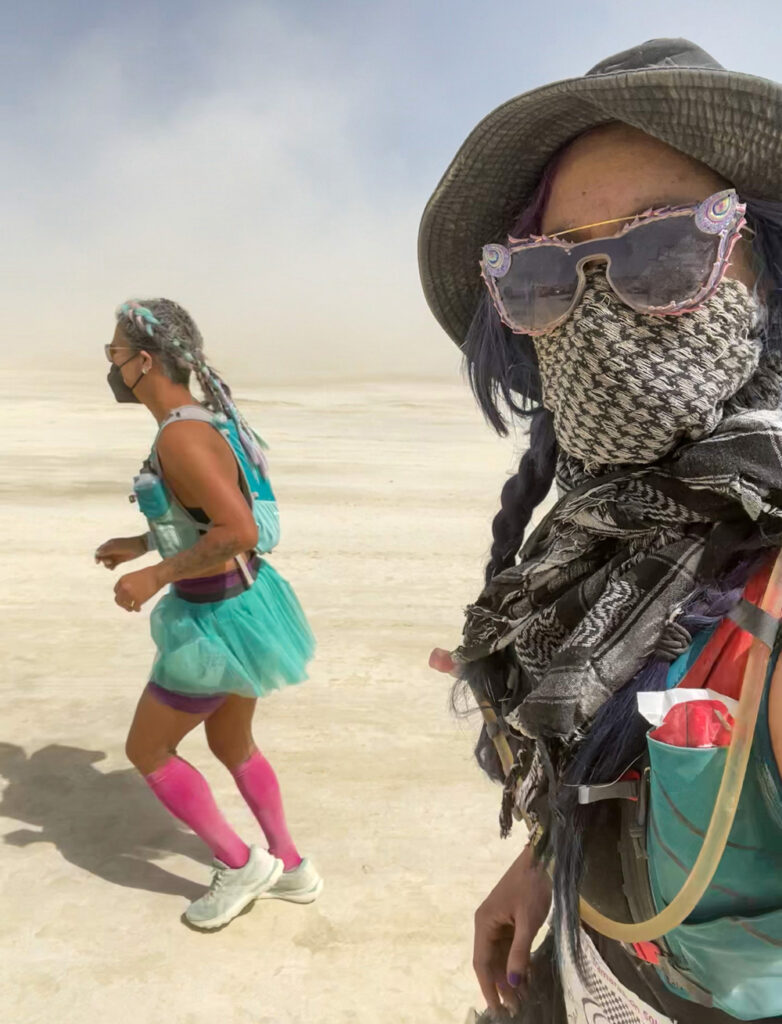
We ran along the trash fence. Sometimes I would pass her. Sometimes she passed me. Occasionally I would look for her in the corner of my eye, wondering if she was still close by. She was always a few feet away: either ahead, behind, or near my side.
We barely spoke to each other, but our little bond spoke louder than words. Both of us focused on the path ahead, desperately eager to finish the last part of the race.
We crossed under the pink lightning bolts in the lonely deep playa, one after another, and continued along the curving Esplanade. The camp checkpoint seemed so far away, despite how much closer we were getting.
The dust storm settled a little. With patience, we followed the path back to Pink Lightning, until finally, we finished the last lap. But it wasn’t over.
We stopped for a quick water break (we were dying!) and waited for each other. There was still one more mile to go.
“You ready?” she asked after her last sip.
“Yeah,” I said. “Let’s do this.”
Together, we took off for the very last part of the race: the mile-long out-and-back to a turnaround point on the Esplanade and 9:10.
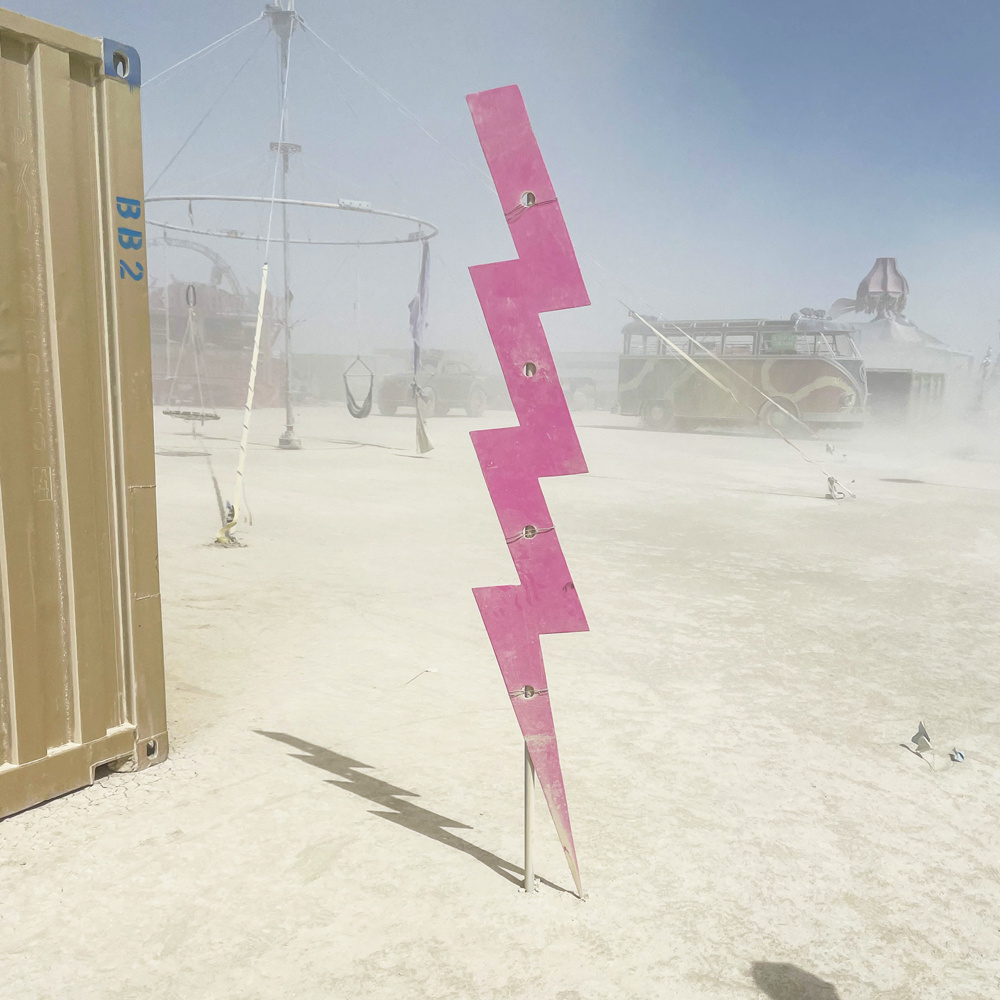
When we reached the last pink lightning bolt, we touched it. This was it–this was the last checkpoint! We turned around to run back to the camp: the finish line.
Once we turned back on D street, we picked up the pace slightly, knowing we were so close to the finish. We ran faster and faster—we could see it in the distance!

The cheers grew louder and clearer. Runners who had already finished screamed encouragement as we both ran between the twin pink lightning bolts at the finish line. I don’t remember who crossed it first.
Relief washed over me as a volunteer put a wooden finisher’s medal with a pink fluorescent ribbon around my neck. Endorphins flooded my brain, the polar opposite of the terrible feelings in the last lap.
I turned to my runner friend and hugged her tight.
“Thank you so much for staying with me!” I said. “That was a huge support.”
“Oh no, thank YOU!” she said. “I would’ve had a tougher time without you.”
“What’s your name?” I asked.
“Pickles.”
“Pickles! I’m Tokki. Great job on the race! We made it!”
We hugged again before setting off our separate ways.
This is “playa magic.” Sometimes little glimmers or miracles happen when you least expect them. This was such a special moment: the unspoken bond of two strangers supporting each other in need. Earlier, I questioned why I keep running marathons and putting myself through unnecessary pain that makes me forget everything good in life. This playa magic reminds me why.
Sometimes little glimmers or miracles happen when you least expect them. This was such a special moment: the unspoken bond of two strangers supporting each other in need.
Pickles, if you ever read this, thank you for being so rad and supportive during the last part of this ultramarathon. I hope life treats you well and that good things always come your way.
Aftercare for the Burning Man 50k
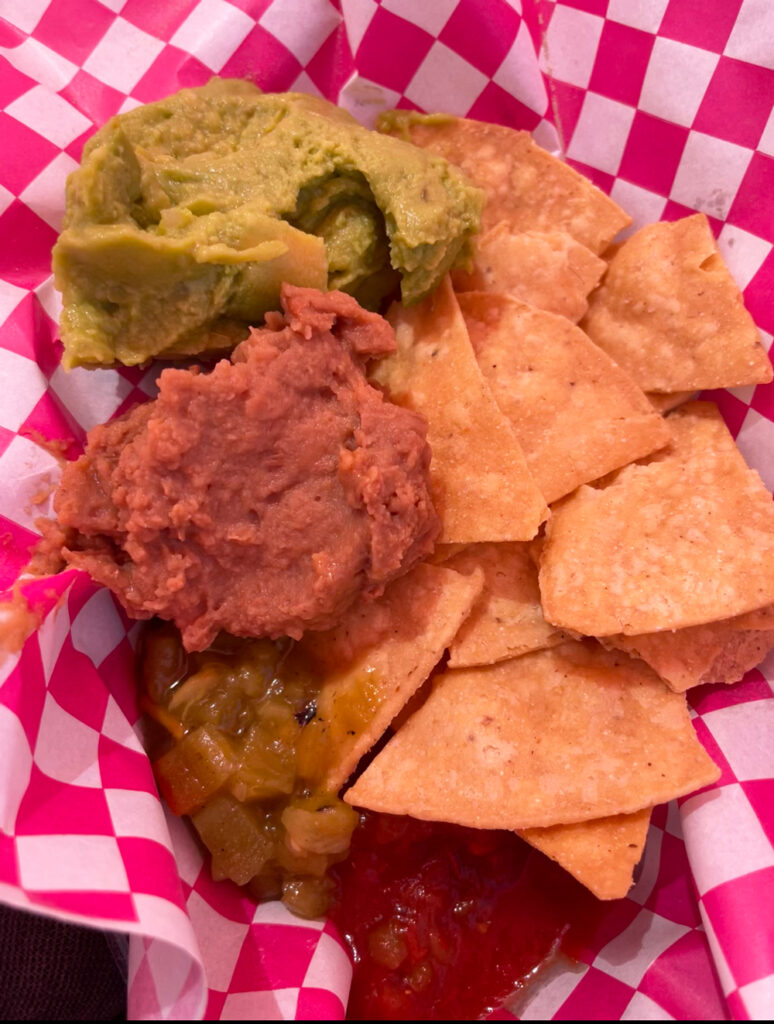
Running 31 miles in the desert is no joke! Despite the plethora of calories I consumed along the course, I still burned off all of my energy and needed to replenish it. The good people at Pink Lightning Camp served up baskets of nachos. I got a vegan version with sides of refried beans, red and green salsa, and extra guacamole. All of those carbs, fat, and protein were just what my tired body needed. It was five-star!
“Fucking A!” I shouted as I sat in a chair with my nachos.
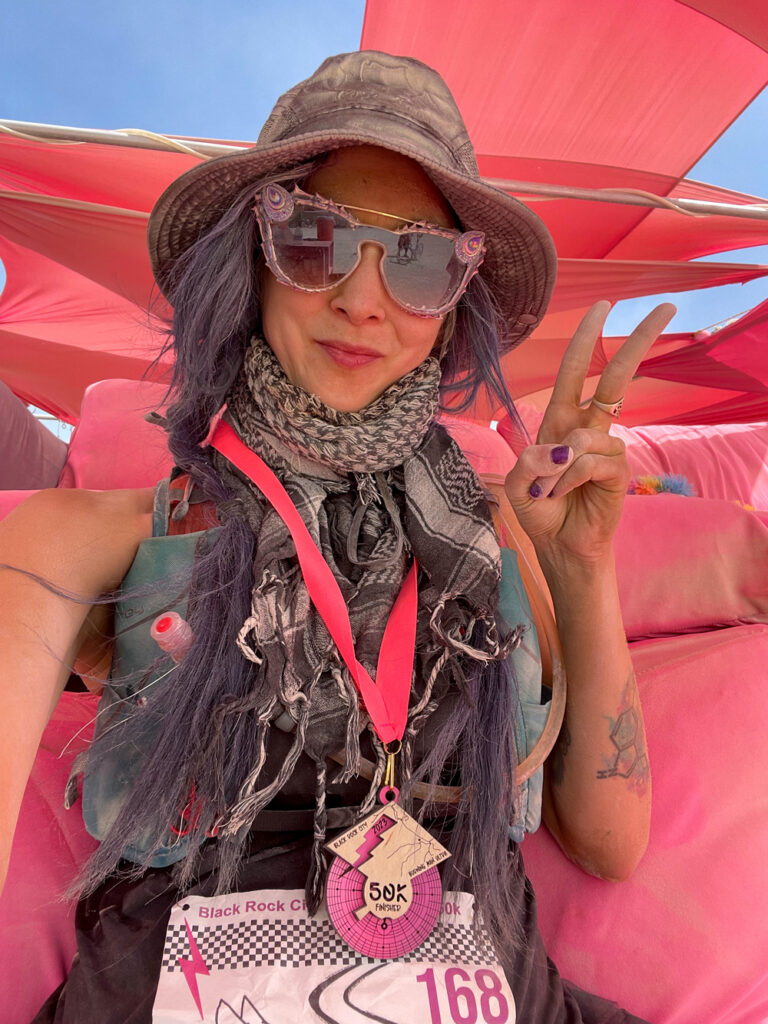
My legs were stiff. My lower back hurt from supporting me for 50 kilometers. Endorphins and other dopey neurotransmitters inundated my brain, as I was struggling to keep myself up. I looked at the intricately cut finisher’s medal, how the pink, laser-cut wooden layers were put together. This race crew put a lot of love into it.
I looked around, eating my nachos piece by piece. Slowly my consciousness replenished enough so that I could eventually stand up.
With the finisher’s medal around my neck, I slowly walked back to my camp. I smiled at random people as they congratulated me. I’ve run many marathons before, but something like finishing an ultramarathon in the desert gave me an enormous sense of gratitude and pride. It showed that I can do hard things and come out on the other side with others in solidarity. If twenty-something me could see what her future self could do, her mind would be blown.

It’s been a month now. I haven’t run since that race, and that’s okay. The itch to run will come back soon. There will be more races in the future, with more magical moments and connections to create. There will be more chances to push through the hardest parts and overcome them. For now, I am slowing down and enjoying the changing seasons, as the summer chapter has closed, slowly giving way to winter.






